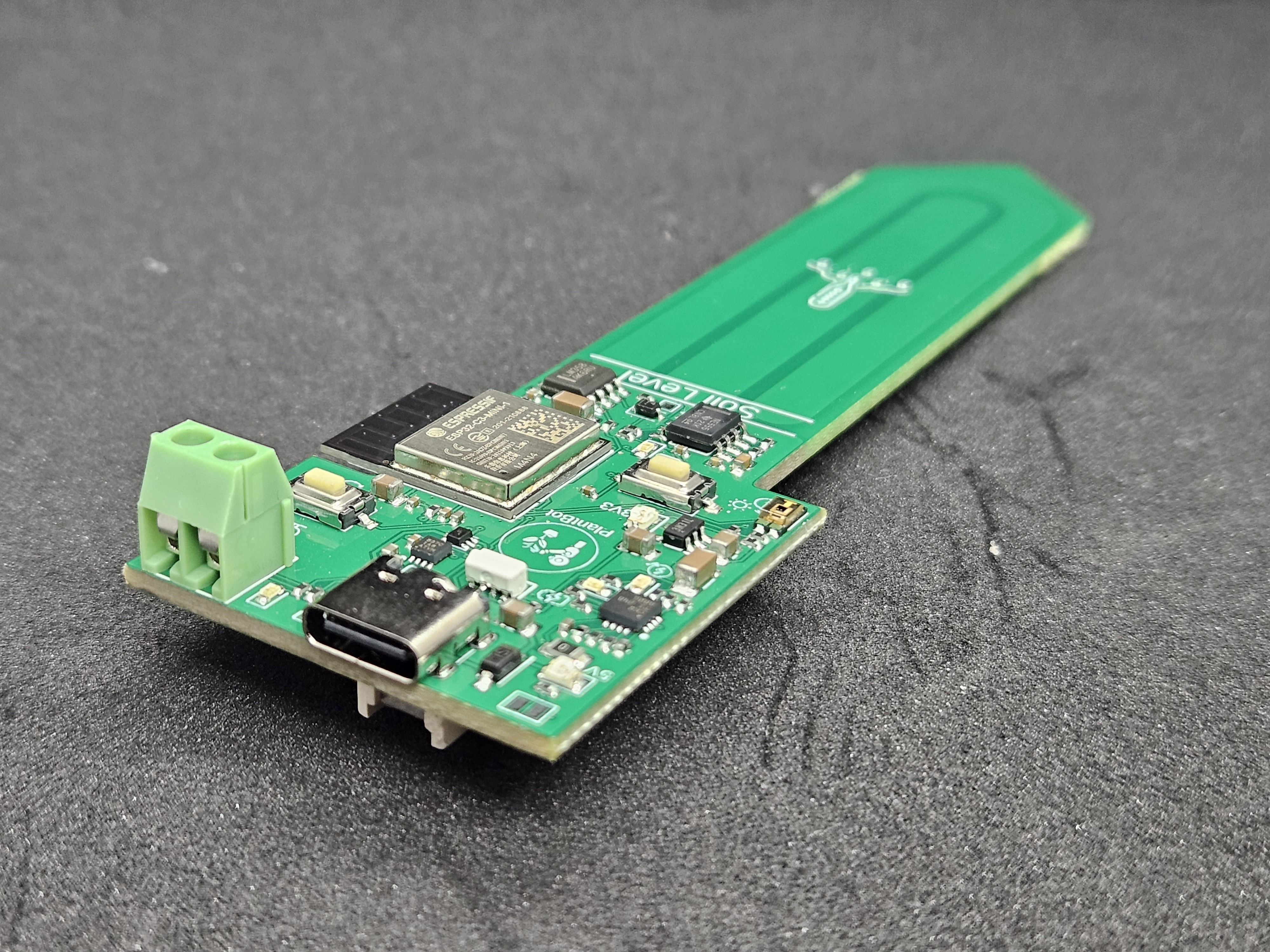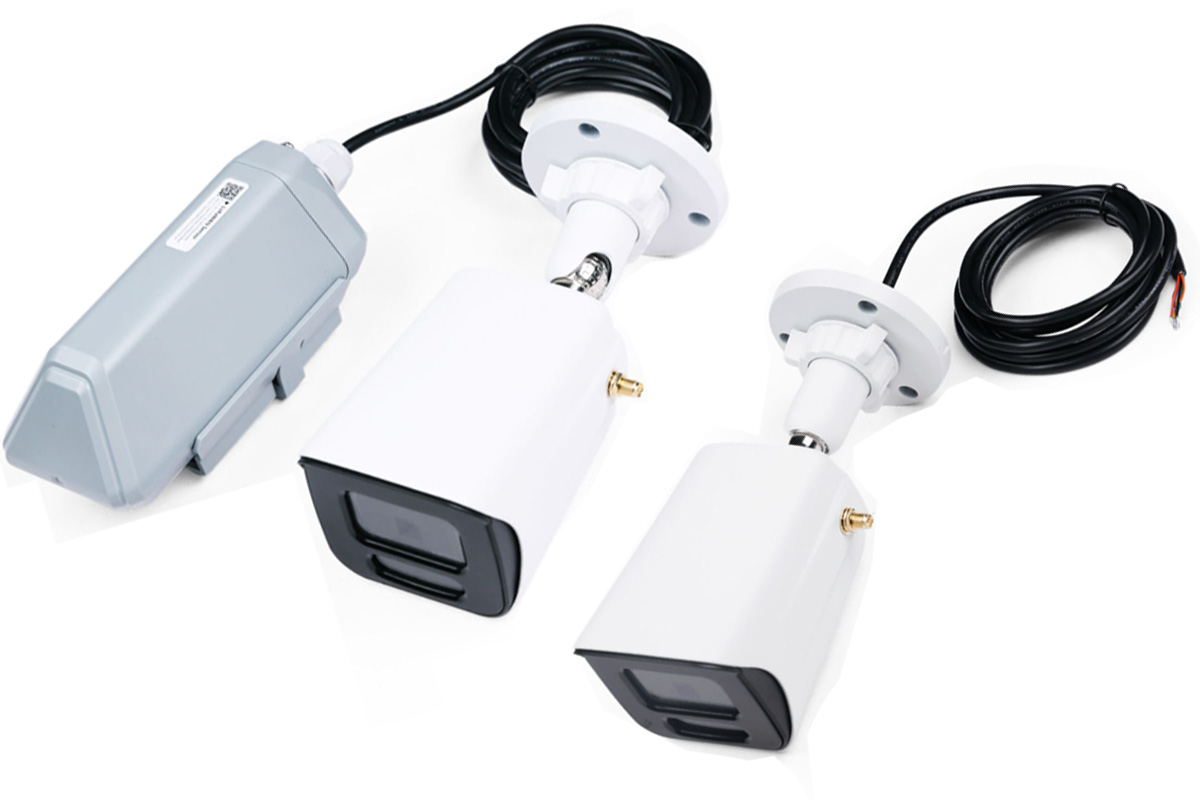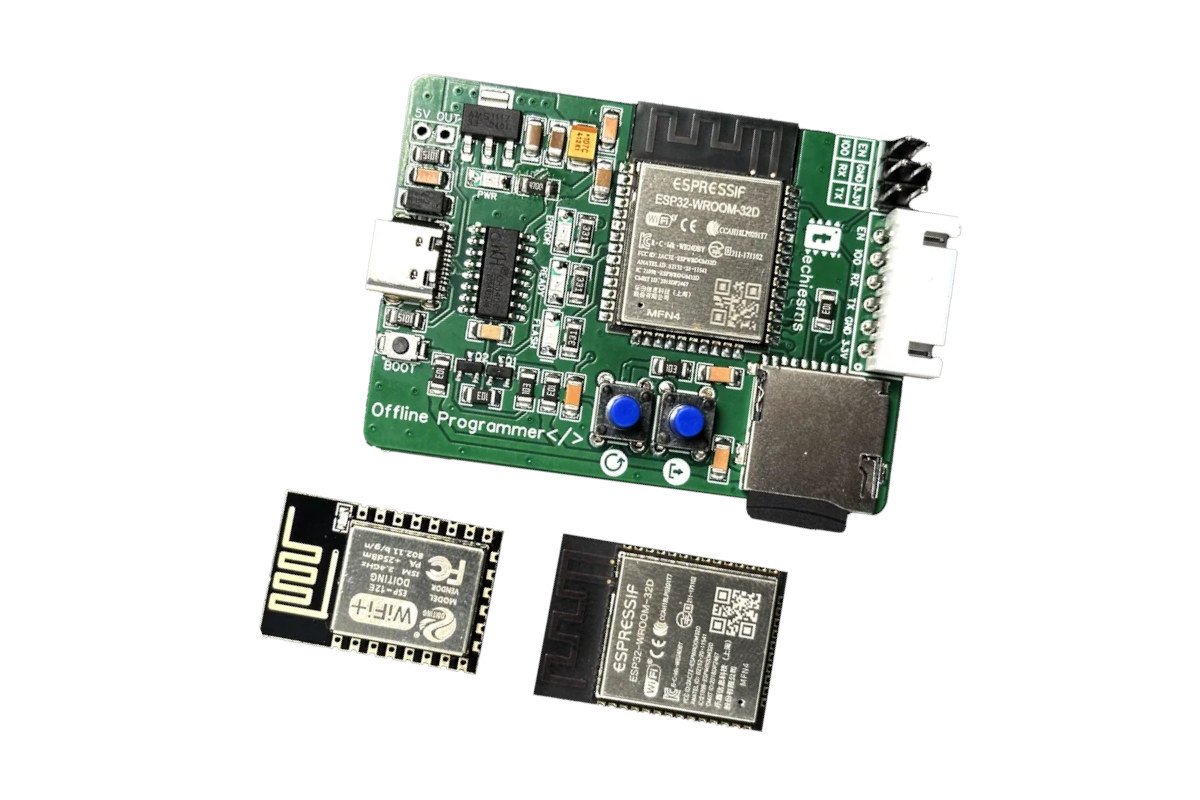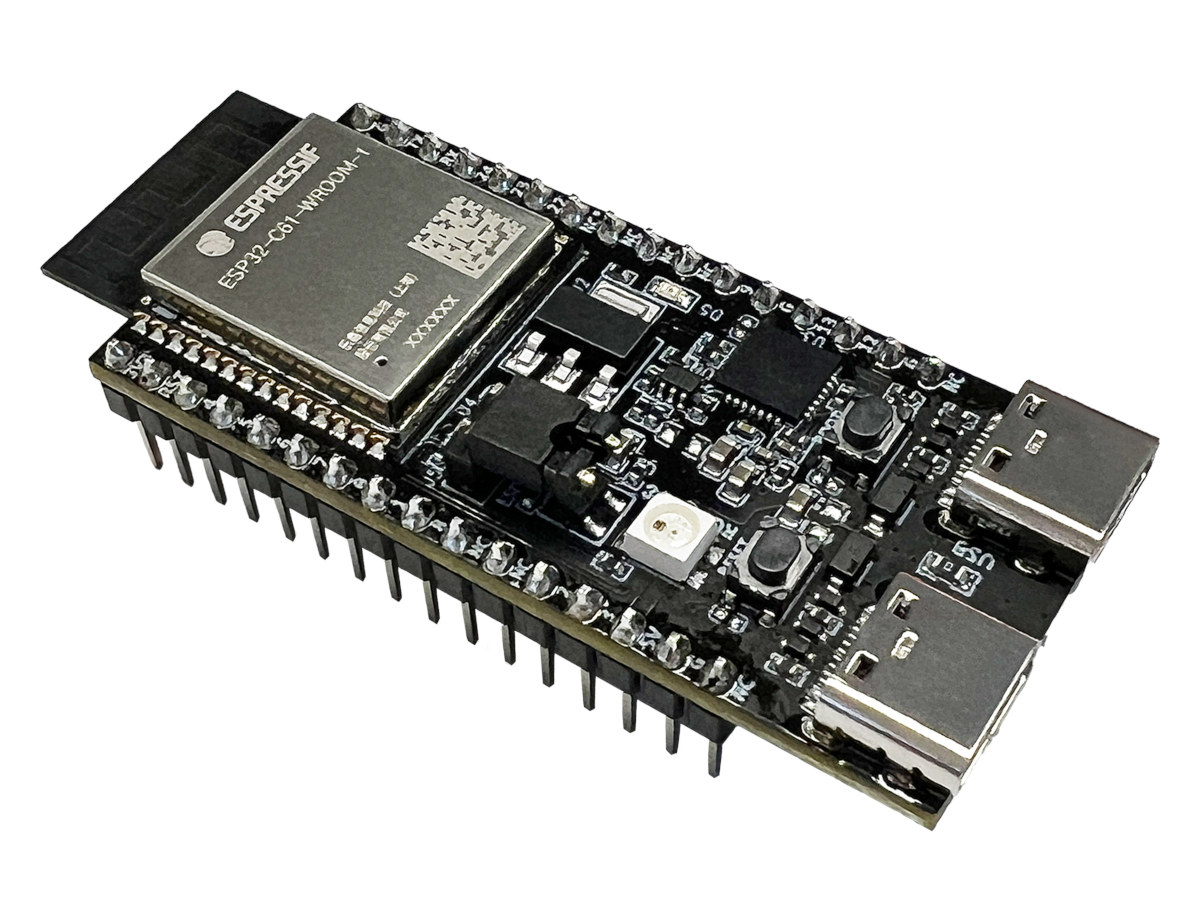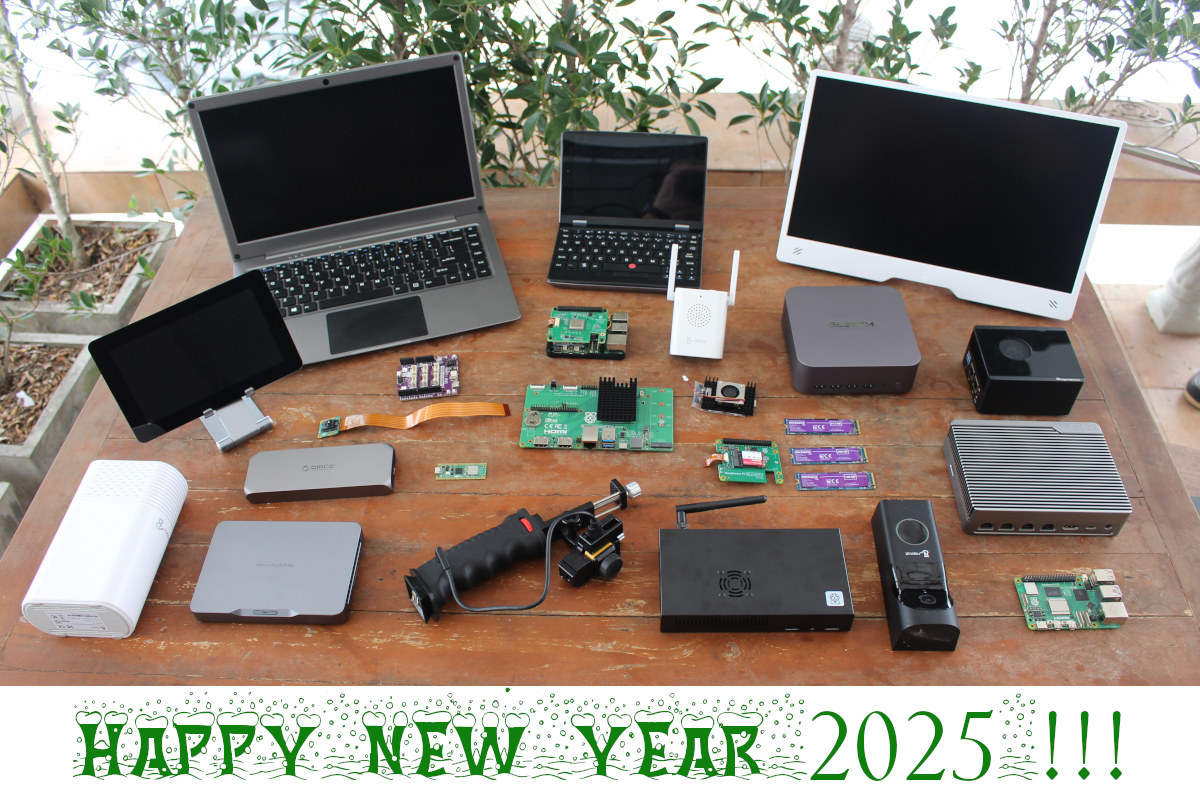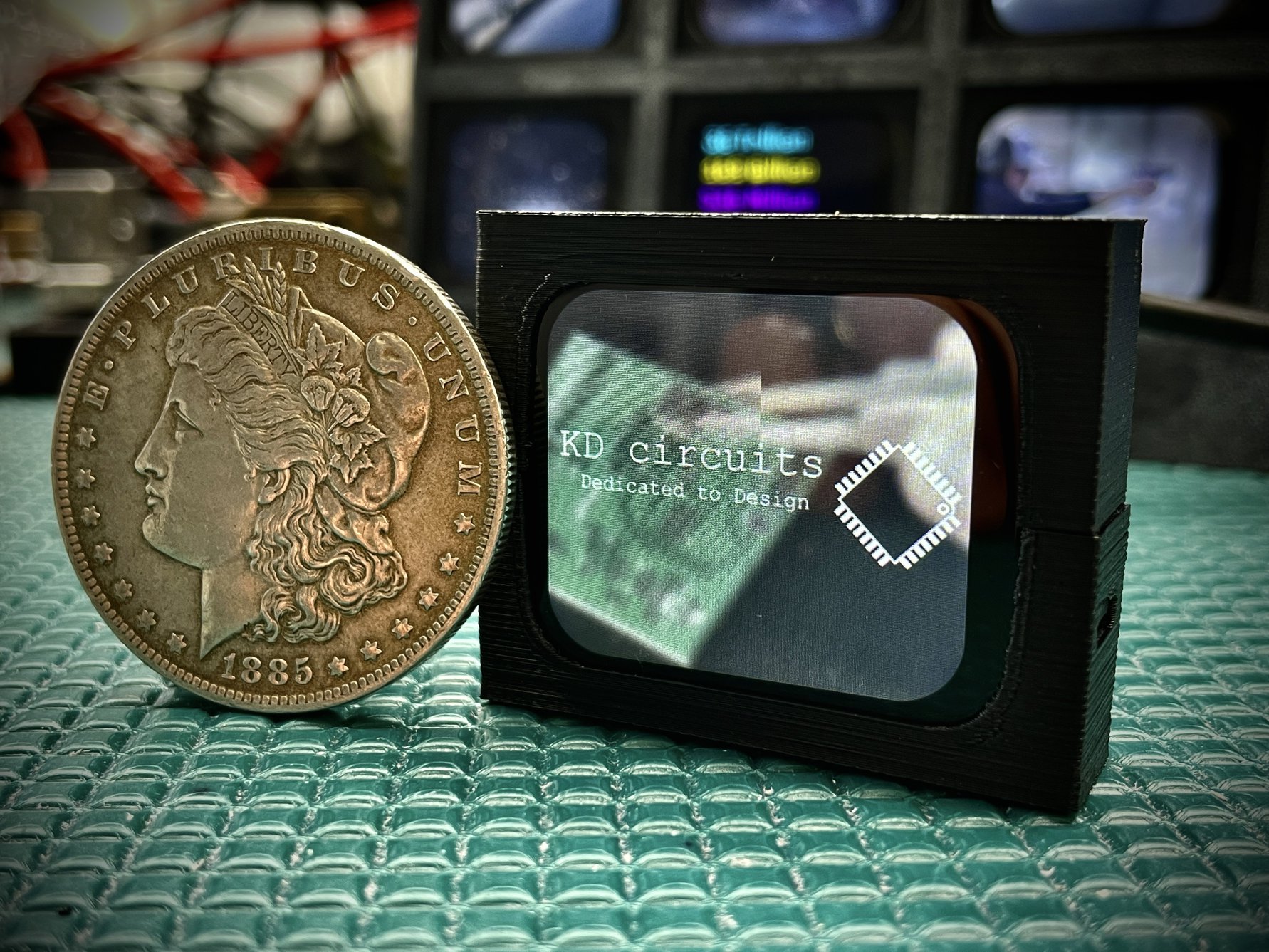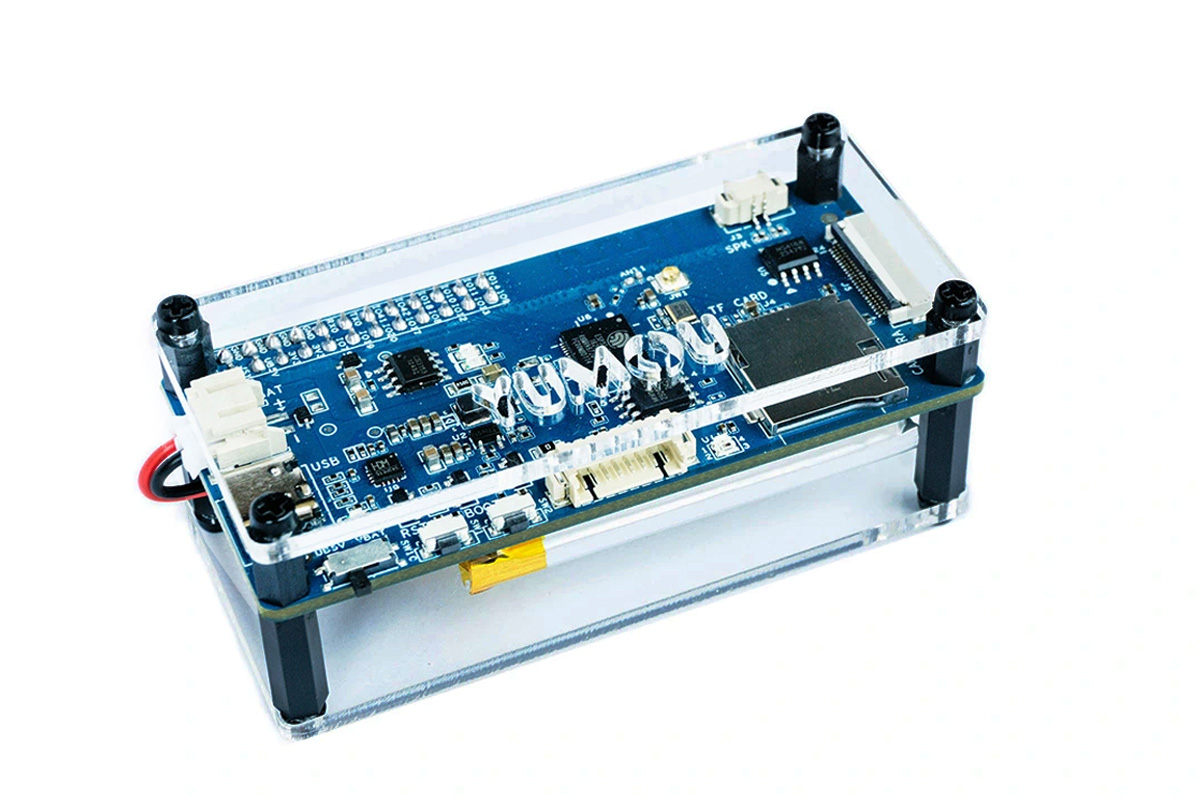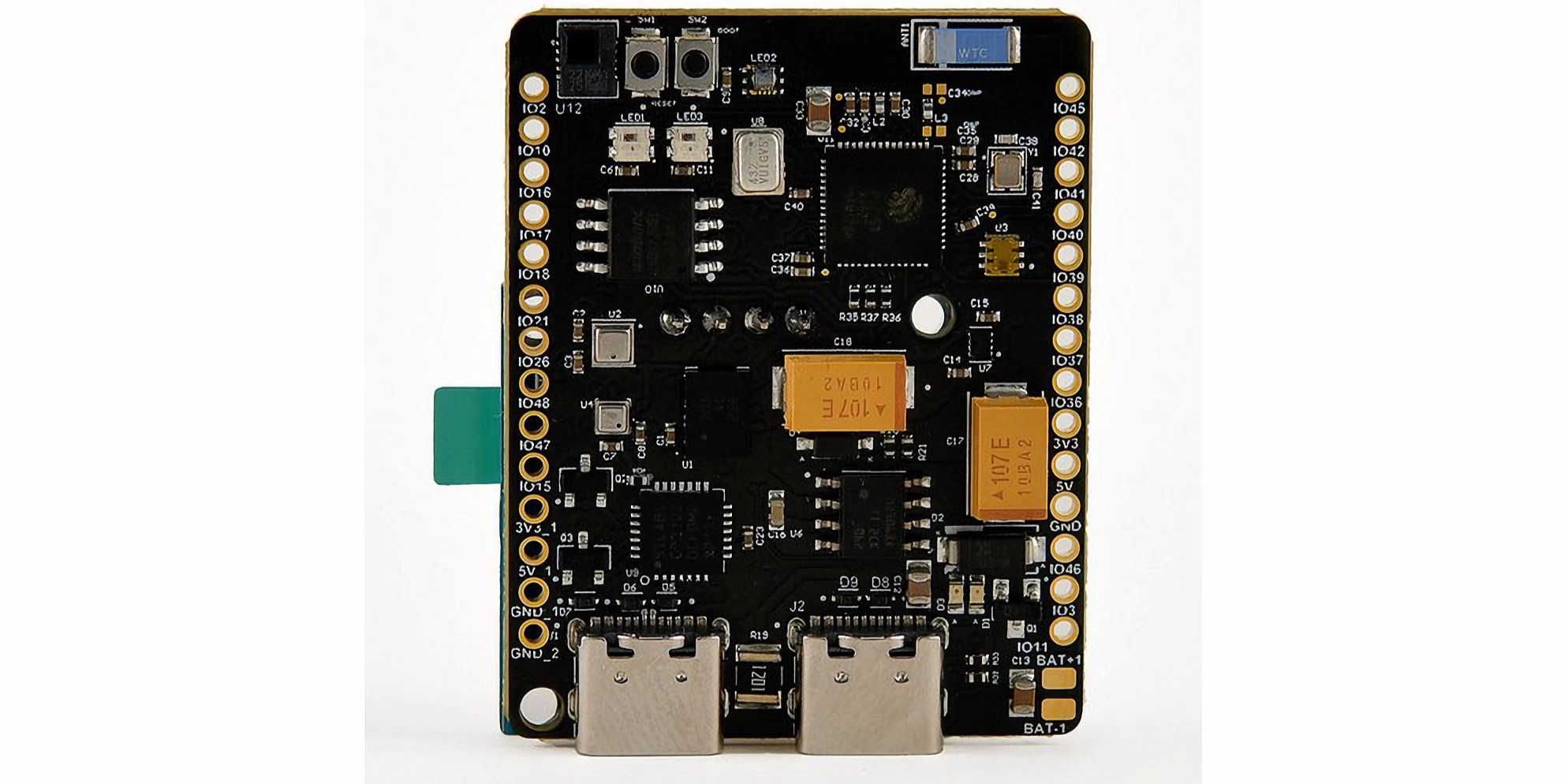The Plant Bot is an open-source, Internet-enabled plant monitor powered by the ESP32-C3 microcontroller and integrating a corrosion-resistant capacitive moisture soil sensor and a pump driver on a single printed circuit board, eliminating the need for additional cabling. The Plant Bot is designed to automate indoor plant care by combining moisture sensing, light sensing, and pump activation. It can be powered via USB or a single coin cell battery which lasts up to a week with daily updates. An onboard multi-color LED visually represents the current soil condition, ranging from red (dry) to blue (moist). The “Soil Level” line on the board indicates the maximum depth to which the sensor or device should be inserted into the soil. According to the maker, the Plant Bot will remain unaffected by corrosion if the soil level does not exceed this line. Other solutions we’ve covered with a soil sensor usually separate the […]
Seeed Studio introduces ESP32-C3-based Modbus Vision RS485 and SenseCAP A1102 LoRaWAN outdoor Edge AI cameras
Seeed Studio has recently released the Modbus Vision RS485 and SenseCAP A1102 (LoRaWAN) outdoor Edge AI cameras based on ESP32-C3 SoC through the XIAO-ESP32C3 module for WiFi and the Himax WiseEye2 processor for vision AI. Both are IP66-rated AI vision cameras designed for home and industrial applications. The RS485 camera is designed for industrial systems and features a Modbus interface, making it suitable for factory automation and smart buildings. The SenseCAP A1102 uses LoRaWAN for long-range, low-power monitoring in remote locations. Both offer advanced AI for tasks like object detection and facial recognition. Besides its built-in RS485 interface, the Modbus Vision RS485 also supports LoRaWAN and 4G LTE connectivity via external Data Transfer Units (DTUs). With over 300 pre-trained AI models, the camera can do object detection and classification tasks making it suitable for industrial automation, smart agriculture, environmental monitoring, and other AI-driven applications requiring high performance. The SenseCAP A1102 […]
ESP Offline Programmer flashes firmware to ESP32 and ESP8266 modules without PC
The ESP Offline Programmer is an ESP32 board with a microSD card slot designed to flash the firmware to other ESP32 or ESP8266 modules without a PC. You’ll still need one to copy the firmware to a microSD card, but once it’s done you can just insert the microSD card into the board and after wiring is done ideally using a jig, start the flashing sequence with the press of a button. In some ways, it’s the hardware equivalent of the esptool utility and can be useful for remote deployment where carrying a laptop may not always be convenient and potentially for flashing hundreds or thousands of modules using multiple ESP Offline Programmers in a way that’s faster than using computers. ESP Offline Programmer specifications: Wireless module – Espressif Systems ESP32-WROOM-32E ESP32 dual-core Tensilica LX6 microcontroller Storage – 4MB flash Wireless 2.4 GHz WiFi and Bluetooth LE connectivity, built-in PCB […]
ESP32-C61-DevKitC-1 development board features ESP32-C61 low-cost WiFi 6 and Bluetooth LE 5.0 SoC
The ESP32-C61-DevKitC-1 is a development board based on the upcoming ESP32-C61 low-cost WiFi 6 and Bluetooth LE 5.0 SoC that was first unveiled in January 2024, and offered with two USB-C ports, two buttons, an RGB LED, and GPIO headers. In my 2024 year in review report, I noted that Espressif would likely launch the ESP32-C5 dual-band WiFi 6 SoC in 2025, but I completely forgot about the ESP32-C61 which is basically a cost-down version of the ESP32-C6. I’ve now noticed the documentation of the ESP32-C61-DevKitC-1 development board and ESP32-C61-WROOM-1 module is now available, so we have more details about those and the ESP32-C61 itself, so let’s have a closer look. ESP32-C61-DevKitC-1 specifications: Wireless module – ESP32-C61-WROOM-1 SoC – ESP32-C61HR2 CPU – Single 32-bit RISC-V core clocked up to 120MHz Memory – 320KB SRAM, 2MB PSRAM Storage – 256KB ROM Wireless – WiFi 6 and Bluetooth LE 5.0 Storage – […]
CNX Software’s 2024 Year in review, website statistics, and what to expect in 2025
That’s it! 2024 is almost over, and it’s time to reflect on what happened during the year. So I’ll look at the highlights of 2024, share some CNX Software website traffic statistics, and speculate on what may be ahead of us in 2025. Looking back at 2024 Raspberry Pi was super active this year with 22 product launches that included boards and modules like the Raspberry Pi 5 with 2GB RAM, Raspberry Pi Pico 2 and Pico 2 W, Raspberry Pi CM5, expansion modules like the Raspberry Pi AI camera, AI HAT+, and M.2 HAT+, new accessories such as the Raspberry Pi Touch Display 2 and the Raspberry Pi Monitor, and the new Raspberry Pi 500 keyboard PC among others. As usual, there was also plenty of announcement of accessories from third parties, and some boards with the new Raspberry Pi RP2350 Arm/RISC-V microcontroller. There weren’t any ground-breaking Arm processors […]
vPlayer – A 1.69-inch ESP32-S3 touchscreen video display with custom expansion options
The vPlayer is an ESP32-S3 touchscreen video display that can be used for continuous MJPEG video playback from a microSD card. It features a 280 x 240 1.69-inch smartwatch-sized touchscreen display with backlight control and also offers expansion options via JST SH/SR connectors (UART, I2C, and I2S audio), and additional I/O pads on the PCB. All these features also make it suitable for applications such as weather displays, live traffic cameras, computer stats monitors, wildlife cameras, and fetching data from the Internet. vPlayer specifications: SoC – Espressif ESP32-S3 CPU – Dual-core 32-bit microcontroller @ 240MHz Memory and Storage – 4MB Flash and 2MB PSRAM Wireless – WiFi 4, Bluetooth 5.0 Storage – MicroSD card slot via MMC 4-bit interface Display – 1.69-inch touchscreen (280×240) P169H002-CTP TFT LCD ST7789V2 single-chip controller/driver CST816 touch controller Backlight control USB – 1x USB-C for power and data transfer Expansion JST SH/SR 1mm connectors for […]
ESP32-AIVoice-Z01 is an ESP32-S3 AI voice kit with dual microphones, wake word detection, noise reduction and echo cancellation
The ESP32-AIVoice-Z01 is an affordable ESP32-S3-powered AI voice kit designed for creating voice-controlled AI applications. It features Wi-Fi and Bluetooth connectivity through the ESP32-S3 SoC, a dual digital microphone array for accurate voice recognition, and an onboard amplifier. The system also implements audio algorithms for noise reduction and echo cancellation. The ESP32-AIVoice-Z01 board supports Espressif’s WakeNet voice wake-up framework and integrates with the AiLinker open-source backend service framework to enable the connection to various large AI model services like OpenAI, ZhiPu QingYan, TongYi QianWen, and DouBao. These features make this device suitable for developing AI-powered toys, IoT devices, mobile devices, and smart home applications. ESP32-AIVoice-Z01 ESP32 AI voice kit specifications Wireless module – ESP32-S3-WROOM-1U SoC – Espressif Systems ESP32-S3 dual-core Xtensa LX7 processor Memory – 8MB PSRAM Storage – 16MB flash Wireless – WiFi 4 and Bluetooth 5.0 connectivity with external antenna Storage – MicroSD card slot Audio Dual digital microphone array […]
Sensy32 Board is an ESP32-S3 sensor platform with up to six sensors for environmental monitoring in IoT applications
The Sensy32 Board is a compact sensor platform powered by Espressif’s flagship ESP32-S3 WiFi and Bluetooth microcontroller. The development board brings different monitoring devices together on the same PCB for easier integration into IoT ecosystems. It is a multipurpose device with several sensors bundled to measure and monitor ultraviolet light intensity, altitude, pressure, orientation, humidity, temperature, motion, and human presence. It includes a 9-degree-of-freedom inertial measurement unit (IMU) for 3D space orientation, while the built-in MEMS microphone can be used for audio input in voice detection and noise measurement applications. The onboard ESP32-S3 microcontroller powers the array of features and also offers Wi-Fi and Bluetooth Low Energy connectivity. The Sensy32 ESP32-S3 sensor platform also integrates an LCD screen for immediate feedback and real-time monitoring. We have covered other ESP32-based environment sensors such as the Qsen-07 multi-sensor board, AirGradient ONE, MoreSense MS-06, and Studio LUFF’s Air Quality Sensor. Sensy32 specifications: MCU […]


